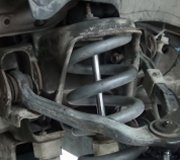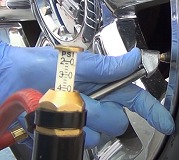Tuesday, December 11th, 2012 AT 9:16 PM
I have a 2004 chrysler pacifica, yesterday I had a flat so I left the car parked while I went to work. After work I went a got a new tire, when I got home I started the car up and drove it into the driveway to change the tire. The drive way is dark so I had the car door open to shed some light, after struggling to get the tire changed (about an hour) I went to get the keys out of the car and it seemed as though the batter y was dead (no lights or power features) I called roadside assistance and the guy came with the small battery pack jumper and when he put the cables on the battery the lights came on but when I tried to start the car up it was just clicking like it wanted to turnover but couldn't. Do I need a new battery or did my altenator go?



